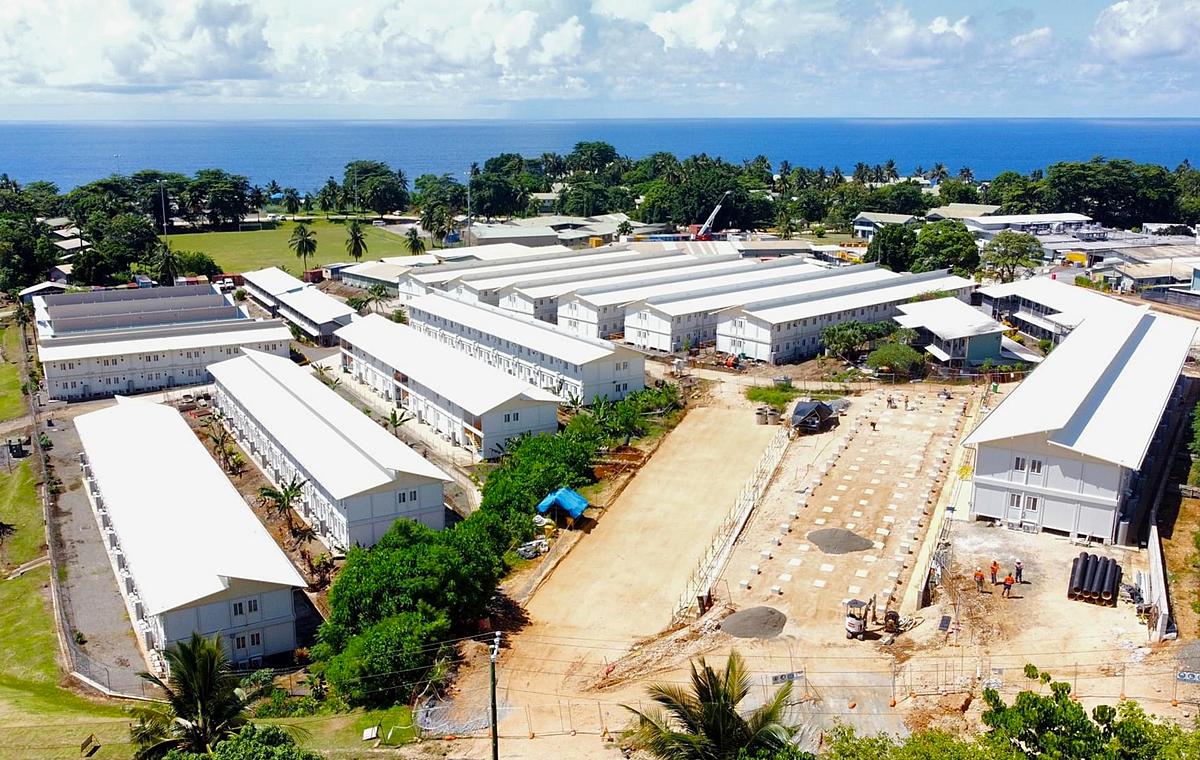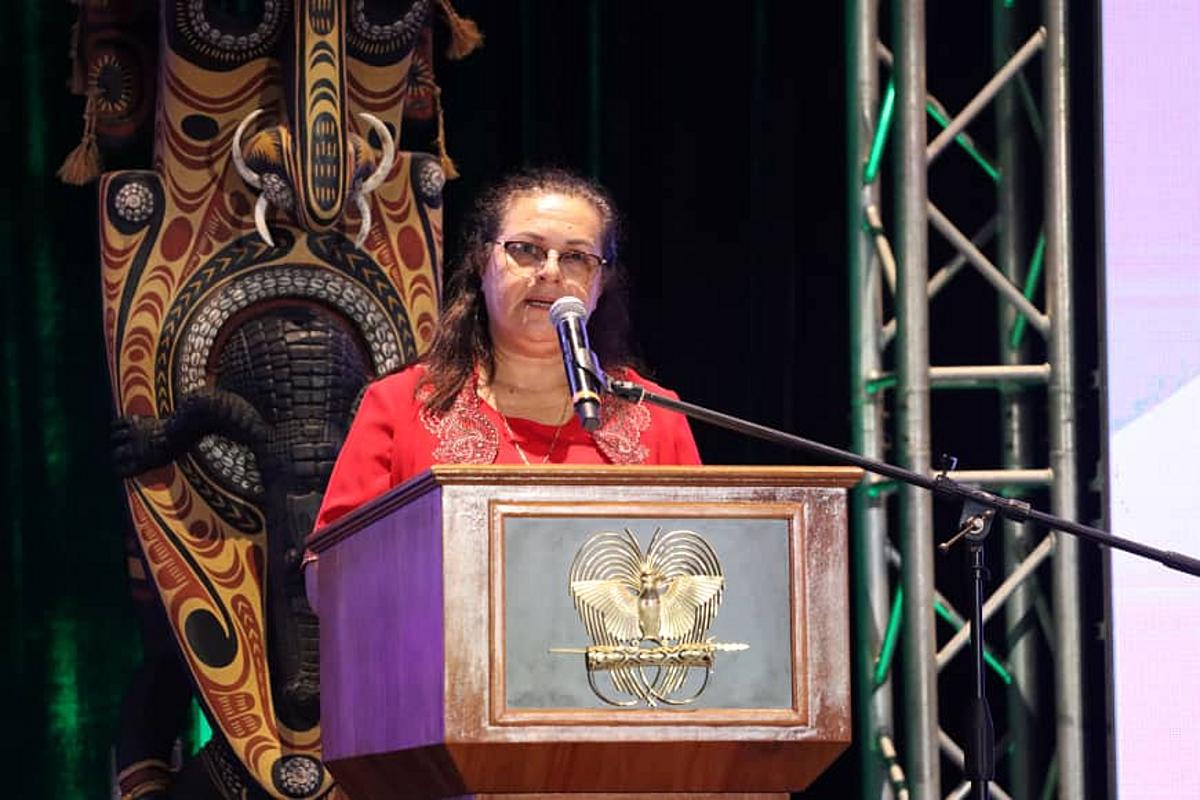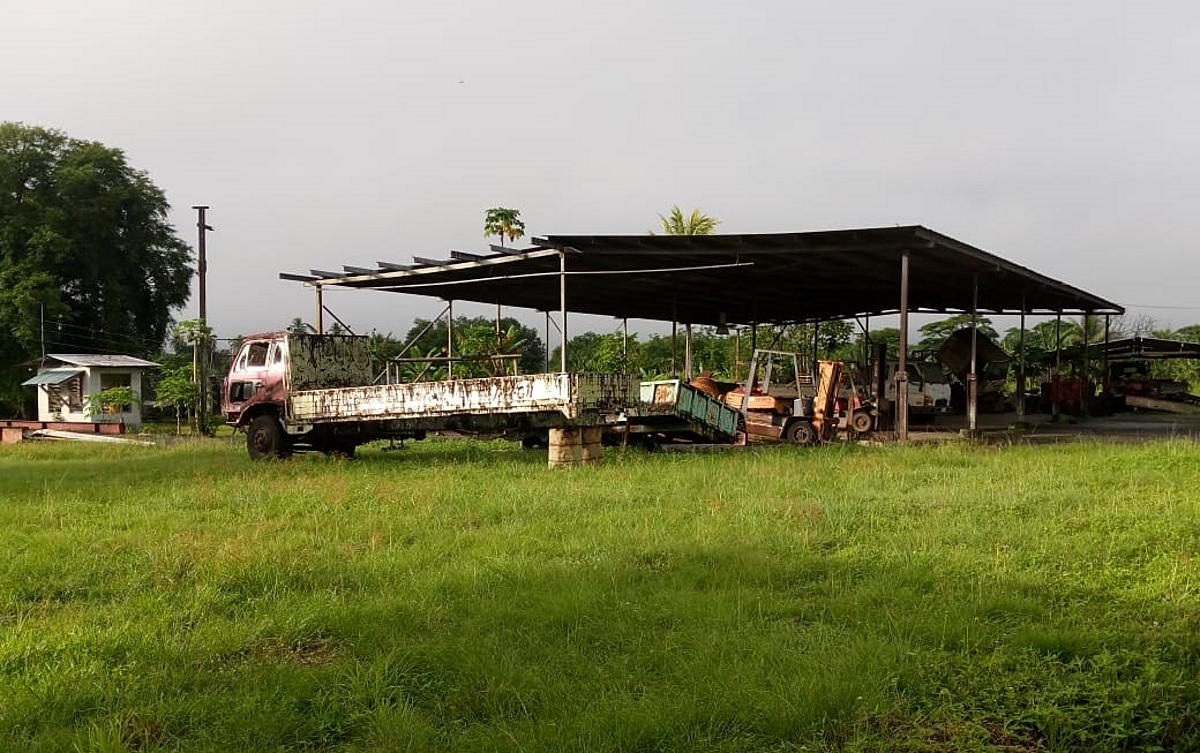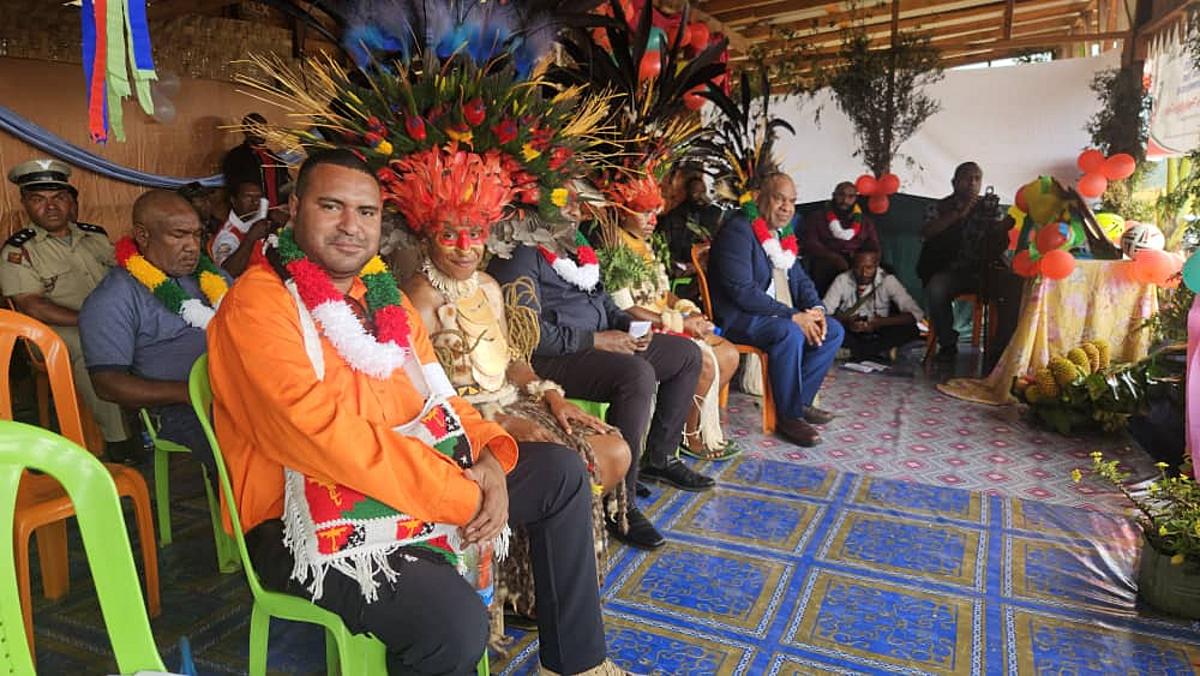Photo: Due to its ‘Lego-like’ ease-of-assembly, Ark estimates that the 2,500-person camp it has designed for the Papua LNG project can be assembled in less than one year like the Komo Airfield camp (pictured) it delivered for the PNG LNG project.
Modular building specialist Ark Pacific (‘Ark’) has delivered 1,800 camp rooms and a multitude of building types for PNG’s resource sector. Most recently, Ark has finalised the design of a 2,500-person camp complex for the imminent Papua LNG project. The company also has two other LNG camp complexes (i.e., another 1,000 rooms) in the design pipeline. Ark’s building systems are engineered for ease of assembly as well as transportation, making them ideal for remote development sites.
Ark’s modular building systems were first introduced to PNG in 2010 during the PNG LNG construction phase, with the design, supply, and installation of both the pioneer and main camps for construction of Komo Airfield. A 1,000-person, multi-storey accommodation complex and support buildings were delivered utilising a 99 percent local workforce in less than one year.
Numerous and diverse Ark buildings have since been delivered throughout PNG. Many of these buildings are on the gold mining island of Lihir where Ark has successfully delivered projects (including 800 camp rooms) for the last six years. Currently scheduled projects on Lihir will see Ark delivering another fifteen buildings, as well as a further 800 camp rooms over at least the next three years.

Pictured are 16 of Ark’s flat-packed camp rooms. Ark’s building systems have a low freight footprint (up to 70 percent less than competitors). Not only does this reduce project costs but it also reduces environmental impact by minimising the number of ships, trucks, and barges etcetera required to get building components to site (and offsite when it’s time to demobilise).
Ark’s 2,500-person camp complex design for the Papua LNG development is based on its flatpack building system. The system can be likened to ‘Lego’ in that its individual modules literally ‘click together’ (both horizontally and vertically), providing clients with virtually endless building configurations.
The ‘Lego-like’ like nature of Ark’s flatpack system has the following advantages:
- Rapid assembly: Ten camp rooms can be assembled in just one day by four workers.
- Unskilled workforces: Local unskilled workers from footprint communities can easily assemble Ark buildings – maximising the client’s local content and benefiting local economies.
- Repurposeability: Buildings can be disassembled once they are no longer needed and transported elsewhere to be used for diverse purposes, such as for schools or medical clinics.
A significant feature of Ark’s product is its extremely low freight footprint (up to 70 percent less than competitors). Ark’s flat-packed rooms are designed to be transported to remote development sites quickly and cost-effectively, with minimal environmental impact.
Unlike competing products, six of Ark’s flat pack units are equivalent to a single standard 20 foot shipping container when stacked together ready for transport – this means less ships, trucks, and barges, etcetera when building with Ark.
Not only are freight costs drastically reduced when building with Ark’s building systems, so too are carbon emissions. Furthermore, degradation of local road networks is reduced and in the case of the Purari delta and river system which will be used for the Papua LNG project, local shoreline communities will be subjected to less water traffic and hence less vessel wake erosion.
The sustainability of Ark’s buildings extends beyond their low freight footprint, repurposeability, and utilisation of local workforces. Ark has invested in solar technologies and is now providing its resource clients with high quality and fit-for-purpose solar systems, further assisting them to both drastically reduce their emissions and minimise their energy costs.










